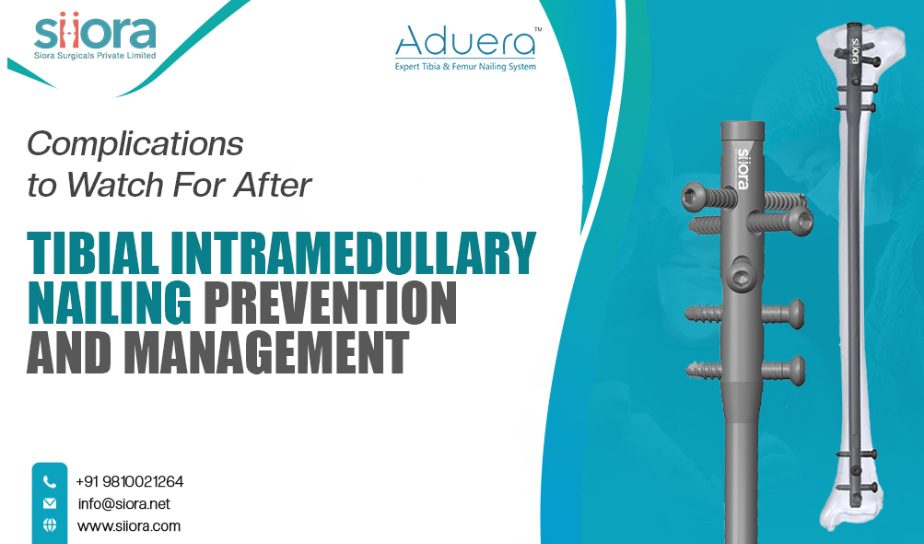Complications to Watch For After Tibial Intramedullary Nailing — Prevention & Management

So, the surgery is done. You’ve got a high-tech titanium tibia intramedullary nail in your shin bone, and you’re officially on the road to recovery. That’s awesome news. The hard part is over, right? Well, mostly. Intramedullary nailing is a fantastic procedure with a great track record, but the journey isn’t over when you leave the hospital. Your body still has to do the hard work of healing, and sometimes, things can go sideways. Being aware of the potential bumps in the road is the best way to spot trouble early and deal with it.
Infection: The One You Don’t Mess With
This is the big, scary one. An infection happens when bacteria get into the wound and set up shop around the implant. It’s rare, but it’s serious.
- What to watch for: This isn’t a mystery. Look for increasing redness, swelling that gets worse instead of better, heat around the incision, and any gross-looking drainage or pus. If you also get a fever and chills, that’s a major red flag.
- Prevention & Management: Your surgeon floods you with antibiotics during and after surgery to prevent this. Your job is critical: keep your incision site clean and dry. Follow the instructions perfectly. If you do get an infection, don’t wait. Call your doctor immediately. Treatment means aggressive antibiotics and, very often, another surgery to wash out the infected area.
Anterior Knee Pain: The Nagging Houseguest
This is by far the most common complaint after tibial nailing. It’s that annoying, persistent pain right at the front of your knee, exactly where the surgeon made the incision to insert the nail.
- What causes it? In the traditional surgical approach, the surgeon has to work around (and sometimes through) the big, important patellar tendon. This can lead to irritation, scarring, and chronic pain long after the bone has healed.
- Prevention & Management: The best prevention is for surgeons to use newer techniques like suprapatellar nailing, which avoids the tendon altogether. If you already have the pain, the fix is usually physical therapy. Focused stretching and strengthening exercises for the muscles around your knee can make a huge difference. Don’t just ignore it; tell your therapist about it.
Nonunion: When the Bone Gives Up
A nonunion is exactly what it sounds like: the bone fails to unite. Months go by, and the X-rays show the fracture gap is still there. The bone has stopped trying to heal.
- What causes it? It can be caused by a lot of things: a poor blood supply to the fracture site, too much movement between the bone fragments, or an underlying infection. But the biggest culprits that you can control are smoking and poor nutrition. Smoking absolutely throttles your body’s healing ability.
- Management: This is a tough problem to solve. Your doctor might try a device called a bone stimulator. Sometimes, another surgery is needed to add a bone graft (using bone from another part of your body or from a donor) to kick-start the healing process. The best management? Don’t smoke. Period.
Malunion: Healed, But Crooked
A malunion is when the bone heals, but in the wrong position. It might be angled, rotated, or shorter than it should be.
- What causes it? Sometimes the bone fragments weren’t lined up perfectly in the first place, or they shifted during the early stages of healing before the bone was solid.
- What to watch for: Does your leg look visibly crooked? Does your foot point inward or outward when you walk? Do you have a new, persistent limp?
- Management: If it’s a very minor alignment issue that doesn’t cause you problems, the answer is usually to leave it alone. But if it’s significant enough to affect how you walk and cause pain in your knee or ankle, the only real fix is a major surgery to re-break the bone and set it straight.
You’re the Most Important Player on the Recovery Team
Knowing about these potential issues isn’t meant to scare you. It’s to empower you. You are the one who will notice if something feels wrong. Trust your gut. Follow your post-op instructions to the letter, crush your physical therapy, and don’t be a hero. If you have concerns, speak up. A proactive patient is the best partner a surgeon can have.





